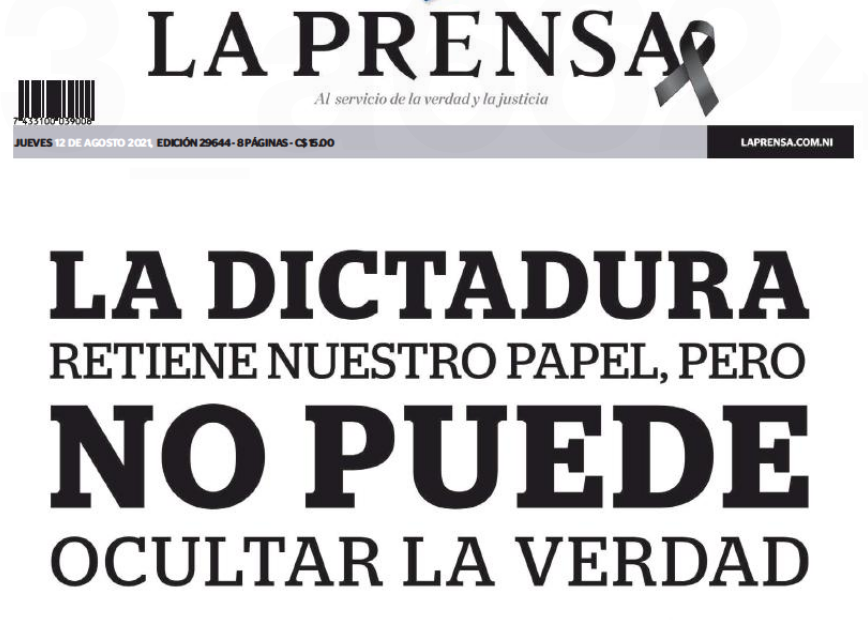
It probably closed even more.¿ Tomás Borge referred to Baltodano, Irvin Davila and others calling for a new party leadership as ¿an insignificant minority¿ (NYT EFE, AP ).

Another Sandinista dissident, Mónica Baltodano, said that ¿there was no opening in the congress. In March 2002, at the time of the FSLN party congress, Oscar Martínez, the FSLN political secretary in the southwestern city of Masaya, told the press that in the congress ¿everything is bolted down,¿ with no room for those who diverged from Ortega¿s orthodox line. In 2001, Tina Rosenberg, member of the New York Times editorial board and longtime Latin American analyst, compared Ortega¿s ¿authoritarian nature¿ to the Somoza regime the Sandinistas overthrew in 1979. It was also rumored that members of the FSLN who called for a public forum on this or other controversial issues would have their party membership suspended or be disciplined in other ways (EFE WASHINGTON POST CANADIAN BUSINESS AND CURRENT AFFAIRS Sep 2001). Narváez Murillo claimed to have been subjected to death threats and other forms of intimidation after she went public in March 1998 with her allegations of more than a decade of sexual abuse. Miguel Angel Casco, who once occupied an FSLN leadership position, and Zoilamérica Narváez Murillo, Daniel Ortega¿s stepdaughter and FSLN activist whom he allegedly abused. Moreover, a number of FSLN dissidents have publicly claimed that they have received death threats, including former Managua councilman and radio figure Carlos Guadamuz, Rev. In September 2001, Marc Cooper, writing from the left in Mother Jones magazine, reported: ¿Over the past few years Ortega has steamrollered internal opposition, expelled his own allies by the dozens¿Ortega has crushed repeated attempts to democratize the FSLN, expelling internal critics and launching smear campaigns against outsiders¿ (MOTHER JONES EFE ). In 1999, a number of prominent party members were expelled for criticizing a pact negotiated by Ortega between the FSLN and the ruling, right-wing Partido Liberal Constitucionalista (PLC), Liberal Constitutionalist Party, of then-president Arnoldo Alemán that gave the two parties a virtual monopoly on the political system and granted former presidents (Ortega and eventually Alemán) immunity from prosecution by making them congressmen for life. With regard to the FSLN response to internal critics, expulsion has been common, practically systematic. The UPN has branches in most departments of the country, including Jinotega (EL DIARIO NUEVO & ).

Still, the extent of the UPN break from the orthodox, Ortega-dominated FSLN has been evident in joint UPN-APN communiqués and the UPN cooperating with the APN on the issue of securing journalist pensions. The UPN continues to be viewed as the leftist journalist group in Nicaragua, in contrast to the conservative Asociación de Periodistas de Nicaragua (APN), Association of Journalists of Nicaragua. But after the FSLN lost power, the UPN distanced itself and backed efforts to reform the party such as those by Sergio Ramirez and the others who went on to form the MRS.

#LAPRENSA COM NI FULL#
The UPN was originally under the full control of the FSLN.
#LAPRENSA COM NI PROFESSIONAL#
Some social and professional groups traditionally allied with the Sandinistas also took a reformist line, for example, the Unión de Periodistas de Nicaragua (UPN), Union of Journalists of Nicaragua. The MRS itself has been vulnerable to divisions, as in 2001 when Téllez, then MRS president, signed an electoral alliance with Ortega, a move rejected by Ramírez (LATIN AMERICA REGIONAL REPORTS: CARIBBEAN AP LATINAMERICA PRESS ). Ramírez, vice-president under Ortega in the former Sandinista government, was elected president of the MRS, and former FSLN guerrilla commander Dora María Téllez as his deputy.

Daniel Ortega, president of the country until 1990 and leader of the so-called orthodox group within the FSLN, retained leadership of the party, with the second position held by Tomás Borge, the hard-line former interior minister. What has been the fate of dissidents within the Frente Sandinista de Liberación Nacional (FSLN), Sandinista National Liberation Front, and have internal critics been subject to threats or violent retaliation, including in northern departments such as Jinotega?Īfter the FSLN lost the 1990 elections, divisions within the party became more pronounced until 1995 when a reformist faction led by Sergio Ramirez and others broke away to form the Movimiento Renovación Sandinista (MRS), Sandinista Renewal Movement, sometimes referred to as the Movimiento Renovador Sandinista. Nicaragua / Dissidents / Journalists / Political parties / Political violence Nicaragua: Information on Dissidents in the Political Party, Frente Sandinista de Liberación Nacional (FSLN), Sandinista National Liberation Front


 0 kommentar(er)
0 kommentar(er)
